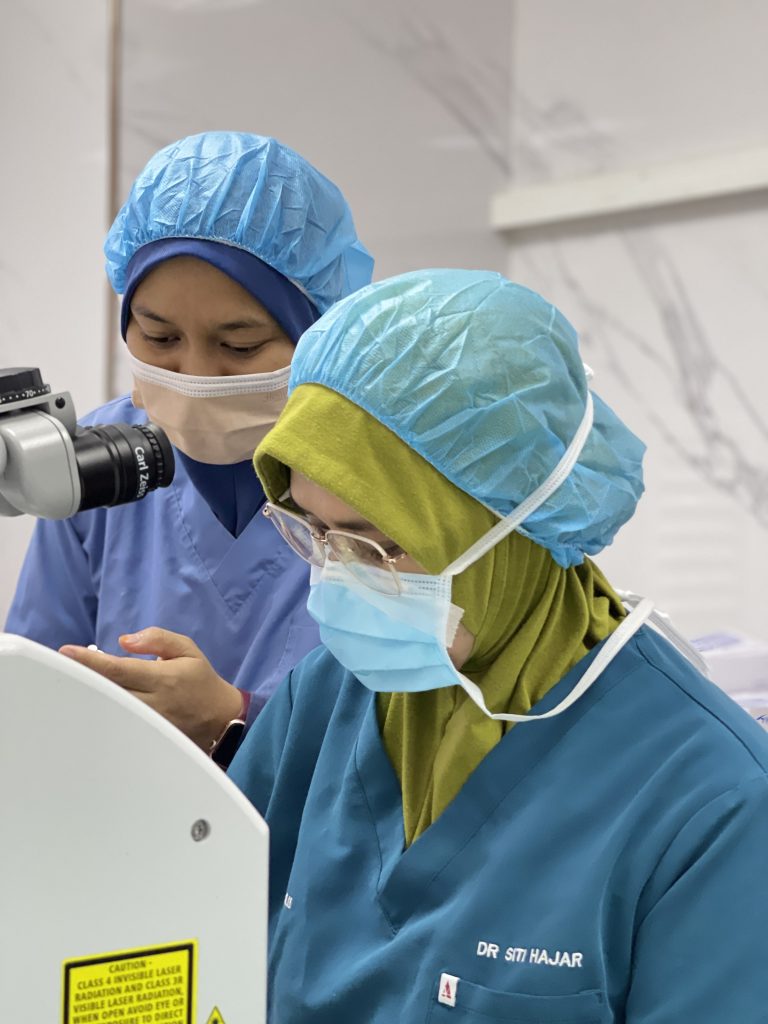Our Expertise
Excellence in Eye Care
We specialize in a wide range of refractive and ophthalmic treatments, including TPRK.
We specialize in a wide range of refractive and ophthalmic treatments, including TPRK.

TPRK
An advanced surface laser vision correction technique that uses an excimer laser to reshape the cornea and correct refractive errors like:
- Myopia (nearsightedness)
- Hyperopia (farsightedness)
- Astigmatism
How Does TPRK Work
No Mechanical Instruments
The laser removes the thin epithelial layer (outermost layer of the cornea) without using alcohol or blades.
Single-Step Laser
The same laser then reshapes the underlying cornea to correct the refractive error.
Natural Healing
The epithelium regenerates naturally within a few days.
Key Features of TPRK
No Flap Creation:
Unlike LASIK, no corneal flap is made, eliminating flap-related risks.
“No-Touch” Technology:
Entirely performed by the laser, reducing infection risk.
Ideal for Thin Corneas:
Suitable for patients who cannot undergo LASIK.
Reduced Dry Eye Risk:
Less nerve disruption compared to LASIK.
High Safety Profile:
Minimizes mechanical manipulation of the eye.
Recovery & Healing
Visual Recovery:
Slower than LASIK (usually 4–7 days to return to normal daily activities).
Discomfort:
Some mild pain or foreign-body sensation for a few days after surgery.
Eye Drops:
Prescribed for healing and comfort during recovery.
Who is TPRK For
- Patients with thin corneas (not eligible for LASIK).
- Individuals with active lifestyles or high-risk professions (e.g., military, contact sports) where flap complications are a concern.
- People who want a flapless, touch-free procedure.
Advantages of TPRK
✅ No flap complications
✅ Suitable for thin or irregular corneas
✅ Reduced dry eye risk
✅ Safer for trauma-prone patients
- Myopia (nearsightedness)
- Hyperopia (farsightedness)
- Astigmatism
How Does TPRK Work
No Mechanical Instruments
The laser removes the thin epithelial layer (outermost layer of the cornea) without using alcohol or blades.
Single-Step Laser
The same laser then reshapes the underlying cornea to correct the refractive error.
Natural Healing
The epithelium regenerates naturally within a few days.
Key Features of TPRK
No Flap Creation:
Unlike LASIK, no corneal flap is made, eliminating flap-related risks.
“No-Touch” Technology:
Entirely performed by the laser, reducing infection risk.
Ideal for Thin Corneas:
Suitable for patients who cannot undergo LASIK.
Reduced Dry Eye Risk:
Less nerve disruption compared to LASIK.
High Safety Profile:
Minimizes mechanical manipulation of the eye.
Recovery & Healing
Visual Recovery:
Slower than LASIK (usually 4–7 days to return to normal daily activities).
Discomfort:
Some mild pain or foreign-body sensation for a few days after surgery.
Eye Drops:
Prescribed for healing and comfort during recovery.
Who is TPRK For
- Patients with thin corneas (not eligible for LASIK).
- Individuals with active lifestyles or high-risk professions (e.g., military, contact sports) where flap complications are a concern.
- People who want a flapless, touch-free procedure.
Advantages of TPRK
✅ No flap complications
✅ Suitable for thin or irregular corneas
✅ Reduced dry eye risk
✅ Safer for trauma-prone patients
👁️
Make Appointment
Pusat Pakar Mata Lasik — Femto LASIK • ReLEx SMILE • PRESBYOND • IPCL • TPRK • Cataract
